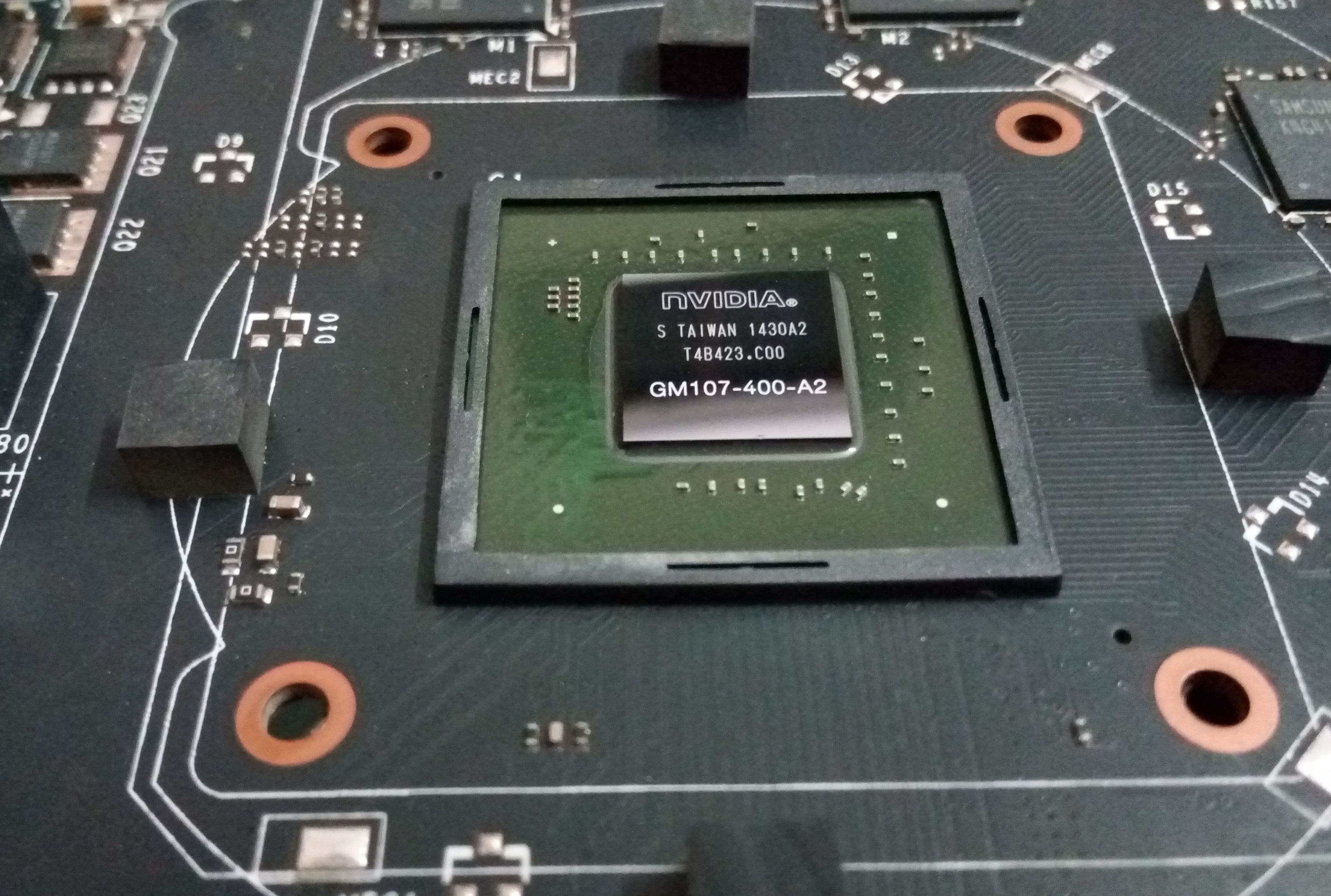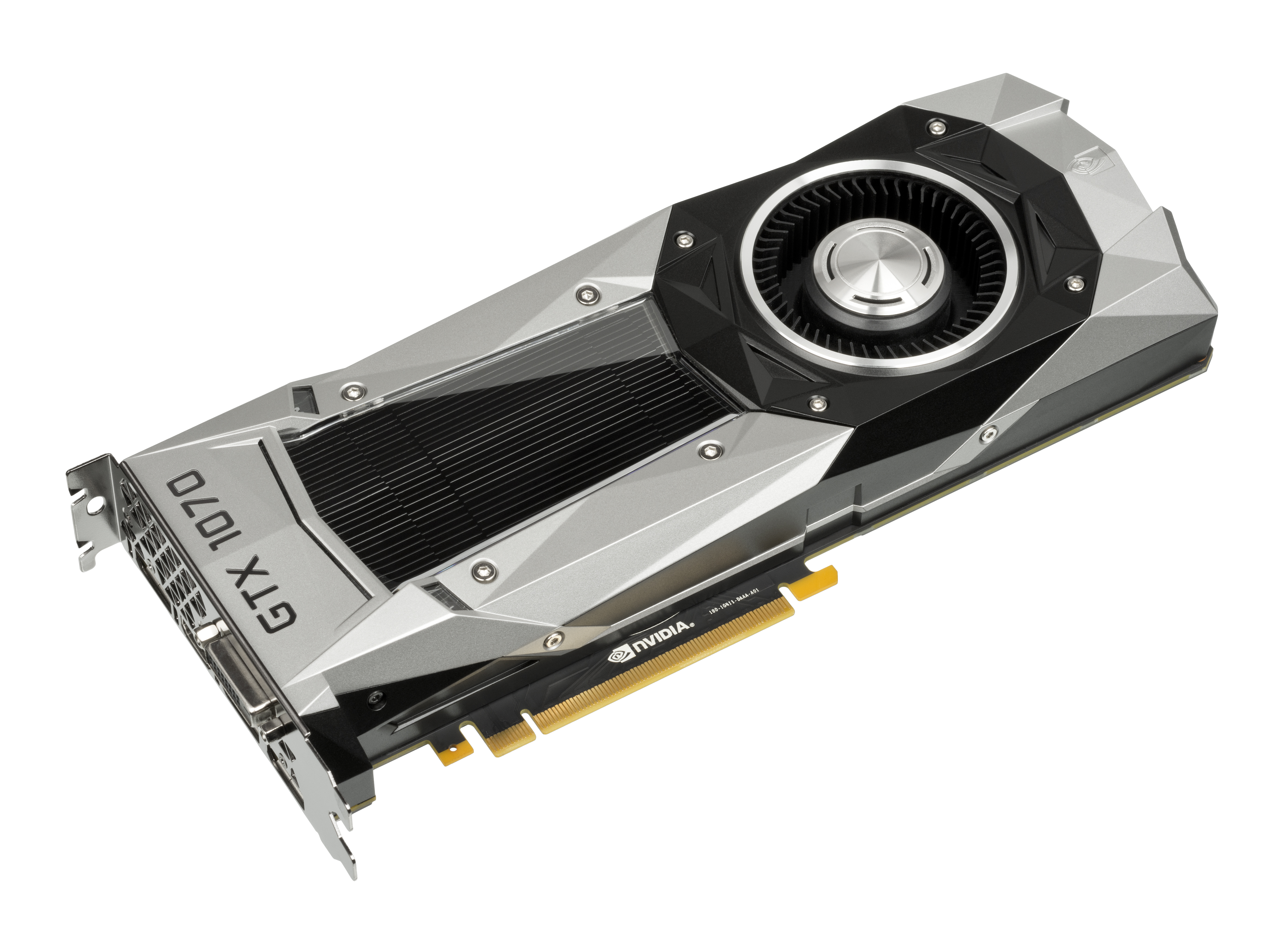|
Maxwell (microarchitecture)
Maxwell is the codename for a GPU microarchitecture developed by Nvidia as the successor to the Kepler microarchitecture. The Maxwell architecture was introduced in later models of the GeForce 700 series and is also used in the GeForce 800M series, GeForce 900 series, and Quadro Mxxx series, as well as some Jetson products, all manufactured with TSMC's 28 nm process. The first Maxwell-based products were the GeForce GTX 745 (OEM), GeForce GTX 750, and the GeForce GTX 750 Ti. Both were released on February 18, 2014, both with the chip code number GM107. Earlier GeForce 700 series GPUs had used Kepler chips with the code numbers GK1xx. First-generation Maxwell GPUs (code numbers GM10x) are also used in the GeForce 800M series and the Quadro Kxxx series. A second generation of Maxwell-based products was introduced on September 18, 2014 with the GeForce GTX 970 and GeForce GTX 980, followed by the GeForce GTX 960 on January 22, 2015, the GeForce GTX Titan X on March 17, 2015, and th ... [...More Info...] [...Related Items...] OR: [Wikipedia] [Google] [Baidu] |
TSMC
Taiwan Semiconductor Manufacturing Company Limited (TSMC; also called Taiwan Semiconductor) is a Taiwanese multinational corporation, multinational semiconductor contract manufacturing and design company. It is the world's most valuable semiconductor company, the world's largest dedicated independent (Pure-play semiconductor foundry, pure-play) Foundry (electronics), semiconductor foundry, and one of Taiwan's largest companies, with its headquarters and main operations located in the Hsinchu Science Park in Hsinchu. It is majority owned by foreign investors. Founded in Taiwan in 1987 by Morris Chang, TSMC was the world's first dedicated semiconductor foundry and has long been the leading company in its field. When Chang retired in 2018, after 31 years of TSMC leadership, Mark Liu became chairman and C. C. Wei became Chief Executive. It has been listed on the Taiwan Stock Exchange (TWSE: 2330) since 1993; in 1997 it became the first Taiwanese company to be listed on the New York ... [...More Info...] [...Related Items...] OR: [Wikipedia] [Google] [Baidu] |
Tegra
Tegra is a system on a chip (SoC) series developed by Nvidia for mobile devices such as smartphones, personal digital assistants, and mobile Internet devices. The Tegra integrates an ARM architecture central processing unit (CPU), graphics processing unit (GPU), northbridge, southbridge, and memory controller onto one package. Early Tegra SoCs are designed as efficient multimedia processors. The Tegra-line evolved to emphasize performance for gaming and machine learning applications without sacrificing power efficiency, before taking a drastic shift in direction towards platforms that provide vehicular automation with the applied "Drive" brand name on reference boards and its semiconductors; and with the "Jetson" brand name for boards adequate for AI applications within e.g. robots or drones, and for various smart high level automation purposes. History The Tegra APX 2500 was announced on February 12, 2008. The Tegra 6xx product line was revealed on June 2, 2008, and the APX ... [...More Info...] [...Related Items...] OR: [Wikipedia] [Google] [Baidu] |
Nvidia NVENC
Nvidia NVENC (short for Nvidia Encoder) is a feature in Nvidia graphics cards that performs video encoding, offloading this compute-intensive task from the CPU to a dedicated part of the GPU. It was introduced with the Kepler-based GeForce 600 series in March 2012. The encoder is supported in many livestreaming and recording programs, such as vMix, Wirecast, Open Broadcaster Software (OBS) and Bandicam, as well as video editing apps, such as Adobe Premiere Pro or DaVinci Resolve. It also works with Share game capture, which is included in Nvidia's GeForce Experience software. Consumer targeted GeForce graphics cards officially support no more than 3 simultaneously encoding video streams, regardless of the count of the cards installed, but this restriction can be circumvented on Linux and Windows systems by applying an unofficial patch to the drivers. Doing so also unlocks ''NVIDIA Frame Buffer Capture (NVFBC)'', a fast desktop capture API that uses the capabilities of the GP ... [...More Info...] [...Related Items...] OR: [Wikipedia] [Google] [Baidu] |
Nvidia NVDEC
Nvidia NVDEC (formerly known as NVCUVID) is a feature in its graphics cards that performs video decoding, offloading this compute-intensive task from the CPU. It is accompanied by NVENC for video ''encoding'' in Nvidia's Video Codec SDK. Technology NVDEC can offload video decoding to full fixed-function decoding hardware (Nvidia PureVideo), or (partially) decode via CUDA software running on the GPU, if fixed-function hardware is not available. Depending on the GPU architecture, the following codecs are supported: * MPEG-2 * VC-1 * H.264 (AVC) * H.265 (HEVC) * VP8 * VP9 * AV1 Versions NVCUVID was originally distributed as part of the Nvidia CUDA Toolkit. Later, it was renamed to NVDEC and moved to the Nvidia Video Codec SDK. Operating system support NVDEC is available for Windows and Linux operating systems. As NVDEC is a proprietary API (as opposed to the open-source VDPAU API), it is only supported by the proprietary Nvidia driver on Linux. Application and library s ... [...More Info...] [...Related Items...] OR: [Wikipedia] [Google] [Baidu] |
List Of Nvidia Graphics Processing Units
This list contains general information about graphics processing units (GPUs) and video cards from Nvidia, based on official specifications. In addition some Comparison of Nvidia nForce chipsets, Nvidia motherboards come with integrated onboard GPUs. Limited/Special/Collectors' Editions or AIB versions are not included. Field explanations The fields in the table listed below describe the following: * ''Model'' – The marketing name for the processor, assigned by The Nvidia. * ''Launch'' – Date of release for the processor. * ''Code name'' – The internal engineering codename for the processor (typically designated by an NVXY name and later GXY where X is the series number and Y is the schedule of the project for that generation). * ''Semiconductor device fabrication, Fab'' – Fabrication process. Average feature size of components of the processor. * ''Bus (computing), Bus interface'' – Bus by which the graphics processor is attached to the system (typically an expansion s ... [...More Info...] [...Related Items...] OR: [Wikipedia] [Google] [Baidu] |
NVLink
NVLink is a wire-based serial multi-lane near-range communications link developed by Nvidia. Unlike PCI Express, a device can consist of multiple NVLinks, and devices use mesh networking to communicate instead of a central hub. The protocol was first announced in March 2014 and uses a proprietary high-speed signaling interconnect (NVHS). Principle NVLink is a wire-based communications protocol for near-range semiconductor communications developed by Nvidia that can be used for data and control code transfers in processor systems between CPUs and GPUs and solely between GPUs. NVLink specifies a point-to-point connection with data rates of 20, 25 and 50 Gbit/s (v1.0/v2.0/v3.0 resp.) per differential pair. Eight differential pairs form a "sub-link" and two "sub-links", one for each direction, form a "link". The total data rate for a sub-link is 25 GByte/s and the total data rate for a link is 50 GByte/s. Each V100 GPU supports up to six links. Thus, each GPU is capable of supporti ... [...More Info...] [...Related Items...] OR: [Wikipedia] [Google] [Baidu] |
FLOPS
In computing, floating point operations per second (FLOPS, flops or flop/s) is a measure of computer performance, useful in fields of scientific computations that require floating-point calculations. For such cases, it is a more accurate measure than measuring instructions per second. Floating-point arithmetic Floating-point arithmetic is needed for very large or very small real numbers, or computations that require a large dynamic range. Floating-point representation is similar to scientific notation, except everything is carried out in base two, rather than base ten. The encoding scheme stores the sign, the exponent (in base two for Cray and VAX, base two or ten for IEEE floating point formats, and base 16 for IBM Floating Point Architecture) and the significand (number after the radix point). While several similar formats are in use, the most common is ANSI/IEEE Std. 754-1985. This standard defines the format for 32-bit numbers called ''single precision'', as well as 6 ... [...More Info...] [...Related Items...] OR: [Wikipedia] [Google] [Baidu] |
Tessellation (computer Graphics)
In computer graphics, tessellation refers to the dividing of datasets of polygons (sometimes called ''vertex sets'') presenting objects in a scene into suitable structures for rendering. Especially for real-time rendering, data is tessellated into triangles, for example in OpenGL 4.0 and Direct3D 11. In graphics rendering A key advantage of tessellation for realtime graphics is that it allows detail to be dynamically added and subtracted from a 3D polygon mesh and its silhouette edges based on control parameters (often camera distance). In previously leading realtime techniques such as parallax mapping and bump mapping, surface details could be simulated at the pixel level, but silhouette edge detail was fundamentally limited by the quality of the original dataset. In Direct3D 11 pipeline (a part of DirectX 11), the graphics primitive is the patch. The ''tessellator'' generates a triangle-based tessellation of the patch according to tessellation parameters such as the ''Tes ... [...More Info...] [...Related Items...] OR: [Wikipedia] [Google] [Baidu] |
Global Illumination
Global illumination (GI), or indirect illumination, is a group of algorithms used in 3D computer graphics that are meant to add more realistic lighting to 3D scenes. Such algorithms take into account not only the light that comes directly from a light source (''direct illumination''), but also subsequent cases in which light rays from the same source are reflected by other surfaces in the scene, whether reflective or not (''indirect illumination''). Theoretically, reflections, refractions, and shadows are all examples of global illumination, because when simulating them, one object affects the rendering of another (as opposed to an object being affected only by a direct source of light). In practice, however, only the simulation of diffuse inter-reflection or caustics is called global illumination. Algorithms Images rendered using global illumination algorithms often appear more photorealistic than those using only direct illumination algorithms. However, such images are co ... [...More Info...] [...Related Items...] OR: [Wikipedia] [Google] [Baidu] |
Tiled Rendering
Tiled rendering is the process of subdividing a computer graphics image by a regular grid in optical space and rendering each section of the grid, or ''tile'', separately. The advantage to this design is that the amount of memory and bandwidth is reduced compared to '' immediate mode'' rendering systems that draw the entire frame at once. This has made tile rendering systems particularly common for low-power handheld device use. Tiled rendering is sometimes known as a "sort middle" architecture, because it performs the sorting of the geometry in the middle of the graphics pipeline instead of near the end. Basic concept Creating a 3D image for display consists of a series of steps. First, the objects to be displayed are loaded into memory from individual ''models''. The system then applies mathematical functions to transform the models into a common coordinate system, the ''world view''. From this world view, a series of polygons (typically triangles) is created that approximates the ... [...More Info...] [...Related Items...] OR: [Wikipedia] [Google] [Baidu] |
AnandTech
''AnandTech'' is an online computer hardware magazine owned by Future plc. It was founded in 1997 by then-14-year-old Anand Lal Shimpi, who served as CEO and editor-in-chief until August 30, 2014, with Ryan Smith replacing him as editor-in-chief. The web site is a source of hardware reviews for off-the-shelf components and exhaustive benchmarking, targeted towards computer building enthusiasts, but later expanded to cover mobile devices such as smartphones and tablets.For instance by: * * * * * Its investigative articles have been cited by other technology news sites like PC Magazine and The Inquirer. Some of their articles on mass-market products such as mobile phones are syndicated by CNNMoney. The large accompanying forum is recommended by some books for bargain hunting in the technology field. AnandTech was acquired by Purch on 17 December 2014. Purch was acquired by Future in 2018. History In its early stages, Matthew Witheiler served as co-owner and Senior Hardware ... [...More Info...] [...Related Items...] OR: [Wikipedia] [Google] [Baidu] |



